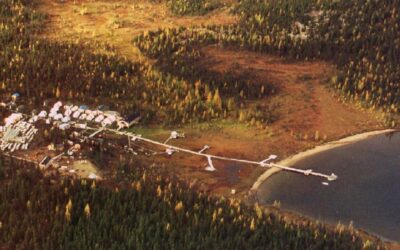Climate change, and the world’s response to it, are increasingly important drivers of economic change. On one side, the changing climate is creating new sources of business risk. On the other side, investment patterns and consumer demand are shifting toward low-carbon goods and services.
Canada’s economy—and, by extension, Canadian workers—face both risks and opportunities from these changes. Businesses that anticipate and adjust can thrive. Those that are complacent and slow to change could be left behind. To secure a prosperous future, we need to stop thinking of climate change as purely an environmental issue. It is also a critical economic issue.
Reflecting climate risk
A certain amount of climate change is already locked in. It’s inevitable that Canadians will face a growing burden of risk and costs from rising seas, the spread of insect-borne diseases, thawing permafrost, and more frequent and severe wildfires, droughts, heatwaves and floods.
Canada is also vulnerable to climate change impacts elsewhere in the world, which can disrupt supply chains, lead to volatile commodity prices, and generate financial losses that ripple through the global economy. Flooding in Thailand in 2011, for example, led auto assembly plants in Canada to cut production in half due to a shortage in parts from Thai factories. Yet only a third of Canadian public companies are disclosing the climate-related risks they face, and just over half of public infrastructure owners are considering some element of climate change in decision-making.
Global demand for fossil fuels will slow, peak, and eventually decline, and this will happen regardless of the choices Canadian governments make. What remains unclear is how fast change will happen. Many Canadian companies and investors are betting that change will come slowly. That has led the Bank of Canada to express concern that asset prices are not adequately reflecting carbon-related risk—since, if change happens faster than expected, large losses could affect the stability of Canada’s financial system.
Governments can help markets better reflect these climate-related risks. For example, the federally-appointed Expert Panel on Sustainable Finance engaged financial sector experts to provide recommendations to scale and align sustainable finance with Canada’s climate and economic goals. Governments can require financial disclosure or project-level stress-testing. They can also help realign incentives through policy. Carbon pricing, for example, sends a signal to invest in reducing emissions. This can encourage innovation and efficiencies that ultimately reduce long-term carbon risk. It can also encourage companies to diversify product lines and supply chains.
Seizing climate opportunities
Competitiveness in the face of change is not just about managing risk. One person’s risk is another person’s opportunity. In emerging economies alone, climate-related investment opportunities are worth an estimated US$23 trillion.
Canada is well-positioned to capture opportunities in a low-carbon world. Canada’s clean technology sector is growing, providing an estimated 282,000 jobs in 2017, which is similar to Canada’s agriculture sector. In addition, natural resource sectors could benefit from increased demand for minerals and metals for electric vehicles and growing interest in bio-based products.
Significant opportunities exist throughout the economy, not just in conventional “cleantech.” For example, what if oil companies could get value from the oil sands that did not result in burning bitumen? One study suggests alternative uses of bitumen could have an annual market value of US$218 billion by 2030. It may also be possible to generate hydrogen – a non-emitting fuel – from the oil sands. Yet these types of innovations are often not eligible for financing from green bond markets, suggesting that a new class of “transition bonds” may be needed, with clear criteria to ensure consistency with Canada’s long-term climate and environmental goals.
A changing climate could also provide new opportunities. Crop losses in one part of the world could mean Canadian crops could help prevent food shortages. Water constraints are already driving growing demand for water efficiency, recycling, and desalination technology—areas where Canadian companies have expertise that can help other countries adapt. Companies developing fire-resistant building materials could also see demand grow in areas at risk of wildfire, helping protect vulnerable communities.
Governments can help increase the chances that companies capture these emerging opportunities. They can develop policies that drive domestic demand and technology adoption. They can provide financial support at critical stages of innovation, or guidelines for new financial products. They can remove regulatory and other barriers. And they can invest in enabling infrastructure.
Making smart choices
The choices made by governments and businesses over the next decade will determine the competitiveness of Canada’s economy for generations to come. The days of considering climate change policy as separate from economic policy are over, and governments are taking huge risks if they don’t consider them in tandem. Canadians should be optimistic about the potential for Canada’s economy in a future influenced by climate change. But they should not underestimate the scale of effort required to realize that potential. As we increase the ambition of climate policy, we also need to expand measures to drive low-carbon and resilient sources of economic growth. Our future prosperity depends on it.
Photo by Lambert Rellosa





